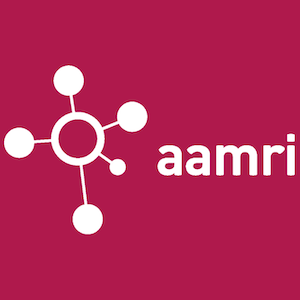Manningham Council is partnering with newDemocracy to deliver the Manningham Community Panel. The Community Panel will feature 40 people chosen through a democratic lottery and tasked with providing recommendations they find agreement on to answer the question:
Council has a budget of $147 million, but we can’t do everything and need to make hard choices. We need to know what services you value most to help us create a new Council Plan, Asset Plan and Financial Plan to guide Council activity for the next four years to align with the Community Vision. It will inform what the community pays and gets in return.
What range and level of services are you prepared to pay for?
Panel members will meet on seven occasions and deliberate for over 40 hours before finding common ground on a self-written report. Manningham Council has committed to implementing the recommendations to the maximum extent possible.
Read the process design here and the final recommendation report here.
Elected representatives at every tier of government face two clear challenges. First, they are concerned that they only hear from the most passionate and motivated voices in their community when making major decisions—it’s hard to reliably reach a representative mix of the community on any given issue. Second, the nature of electoral politics and shallow public opinion discourages airing issues with complex trade-offs—people jump to conclusions before everyone can consider the merits.
Decision-makers need counterbalancing voices that are more representative and have the time to properly consider the pros, cons, and various perspectives on any given issue.
This was one of the primary motivations for the inclusion of ‘deliberative engagement’ requirements in the Victorian Local Government Act (2020). Adding the voices of people from all walks of life weighing trade-offs together was intended to assist elected decision-makers who are frequently deluged with ‘wishlist’ requests from the more passionate sections of the community.
The incentives are high when you’re significantly impacted by or invested in the outcome of a decision. When the effects, good or bad, are spread across the whole community, it makes perfect sense for the vast majority of people to tend to their busy personal lives. This, coupled with the often shallow or too-late nature of most community engagement, fuels disinterest in community participation (“Why would I waste my time, they’ve already decided what they want to do.”)
We need to build new and better methods for hearing from the community that appeal to those less familiar with the Contact Us form on the Council website.
People want meaningful opportunities to influence the public decisions that impact their day-to-day lives, but we can’t just give these decisions over to shallow public opinion—where we allow people 10 minutes of thinking before offering their views on things as complex as the Asset plan for the whole Council. Instead, we need to intentionally design processes that provide people with the necessary time, information, and influence, respecting people’s desire to contribute with the appropriate conditions to ensure that the process is fair and effective for everyone (including those not in the room).
Two deliberative engagement projects that heavily influenced the review leading to the new Local Government Act were long-format, lasting six days. The extended duration is important: time is the critical variable needed for people to truly understand and weigh the trade-offs and for them to fully satisfy themselves that they have had a chance to question and consider alternatives.
In addition, the selection of participants in a deliberative process addresses the imbalance sometimes created by the most passionate and motivated voices. The fairest method for ensuring the group is representative is to choose people by lottery such that they descriptively match the wider population and are representative of the community.
The result? A range of people from all walks of life who stand behind their work and ‘share the decision’ with elected representatives.
Councils have found the lack of guidance about how to meet the new Act’s aspirations challenging. What follows aims to be an exemplar in terms of depth and democratic opportunity; it is based on the projects that first influenced the commissioners who conducted the review leading to the new Act.
There is a vast gap between what the community want as residents and what they are prepared to pay for. This is often the gap between public opinion and public judgment. What your top-of-mind response is in the next 5 minutes tends to be very different to your response after spending 40 hours across three to four months immersed in a problem. It can be the difference between buying a juice and a house.
To ask members of the community to consider both questions in tandem, they need time, information, and support to find common ground on answers. Within these conditions, 40 people representative of the community—old and young, rich and poor, blue collar and white collar, of various backgrounds and skills— can build a deeper understanding of the Council’s operations, challenges and competing priorities to solve this challenge of behalf of the wider community.
Beyond the legislative mandate, Councils and Councillors have another challenge. Politics in an age of social media makes exploring new ideas, whether small or transformational, significantly more difficult. Incentives to participate skew significantly in favour of those with something to lose and an online outrage machine exists to weaponise raw public opinion.
It is telling that most in elected office would agree that in an electorate of 100,000+ people (or the 123,000 in Manningham), a group of 10-20 can effectively inhibit the exploration of a new idea. As an elected official, you cannot ignore public opinion, but you can add public judgment. It is noted in our justice system that even when there is outrage about a crime, there is trust in a jury’s verdict. Where judges find juries complementary, we think councillors can as well.
A deliberative approach can change this. With the process giving citizens clear incentives to read deeply, long term vexed issues can be added to background information documentation. Equally, the extended time format allows for two-way learning exchanges (‘speed dialogue’) between participants and councillors.
This demonstrates that the principles and approach mandated in the Act can be utilised to offer greater insight into deeper, long term wicked problems – issues where all courses of action earn criticism, and thus where the ‘sensible’ approach is generally to avoid them. The move to a representative group of people who have an understanding of the complexity of council operations changes the conversation. Councils always heard from insistent voices; here we add the distinctly different approach of invited voices.
Councillors and council staff must understand one key design constraint that has to be incorporated into the following advice. As noted above, the critical variable in citizen deliberation is time. This is why this proposal seeks to spend six full days asking citizens to resolve the key question about the range and level of services rather than taking a daily ‘theme by theme’ approach. They must do this across all services concurrently so as to weigh the tradeoffs involved and avoid a ‘wishlist’ mindset.
Councillors today are often constrained into a narrow range of options. By giving citizens extended time and a depth of information they will provide you the insight of where your community, as a diverse group, can find agreement on difficult tradeoffs thus empowering those in public office that they
are backed by informed public judgment.
Resources:
- Process Design – produced by newDemocracy and MosaicLab
- Community Panel’s Final Report – written by the panel




